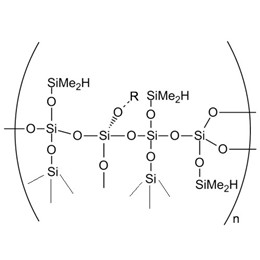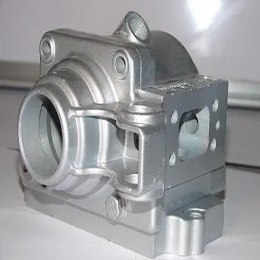As a new type of environmentally friendly material, silicone has excellent high-temperature resistance, low-temperature resistance, corrosion resistance, thermal stability, optical properties, etc. Electronic-grade silicone is widely used in electronics and other industrial fields, mainly in the manufacture of electronic circuit components, conformal coating, acoustic materials, catalysts, lubricants, and so on. So why use silicone for electronics first?
Silicones are leading the way of life in electronic applications. Silicones are used in the electrical materials of cell phones, the Internet, wireless computers, and smart cards.
High-performance materials made with silicone technology are making their way into today's increasingly demanding electronic and electrical applications. Silicones are temperature-resistant, have electrical tracking, and can seal and protect extremely sensitive circuits and corrosion-sensitive electronic components, semiconductors, and equipment from heat, contamination, and accidental damage; the silicone can enhance performance to help ensure a continuous supply of electricity; the durability of silicones can save money; the silicone can extend the life of electrical and electronic appliances.
Here's some information about it:
- What are the advantages of silicone?
- How to apply silicone?
- How to choose silicone raw material?
- How to make electronic-grade silicone products?
1. What are the advantages of silicone?
As the use of silicone in the electrical materials industry and related industries continues to expand, consumers are benefiting from it every day. The silicone industry is constantly improving existing applications and technologies to make them more versatile, easier to use, and less expensive. Silicones are indispensable for virtually any electronic device or satellite that is battery-powered, outlet-powered, or industrial-powered.
1.1 Protection equipment
Silicones play an indispensable role in the development of computer technology, telecommunications, and a variety of other related fields that require microchips.
Silicone can provide a perfect sealing function for the product to provide extreme temperature and pollution protection, to protect the extremely sensitive electronic components and components from external contamination or the impact of movement. This is important to ensure the long-term stability and performance of many electronic products. In addition, silicone materials are non-slump, non-corrosive, and non-spontaneously combustible, meeting the most stringent safety and purity requirements for electronics production and manufacturing.
Silicones' isolation properties help protect the circuitry of TVs, computers, and airplane video displays from heat, dirt, and dust. Silicone is also well suited for high-voltage applications, insulating cables, and power lines above and below ground.
![]()
![]()
1.2 Enhanced Performance
As electronic devices become thinner, smaller, and faster, silicone's outstanding physical properties allow it to excel in new applications: its high and low-temperature stability, excellent insulation, strength, elasticity and toughness, resistance to moisture, chemical stability, UV resistance, and other environmentally friendly properties, which can be bonded, protect a variety of materials.
1.3 Cost savings
Silicone has the advantages and flexibility to help fast, aseptic, and efficient production and installation. The durability of silicones reduces the cost of cleaning, maintenance, operation, and replacement of new and old electronic products. And silicone sealant adhesive has the durability and longevity that consumers demand, with better performance and stability in extreme environments, reducing wear and tear costs.
1.4 Extend the life of electronics
Silicones maintain their resistance to wear and tear even under the harshest conditions. Therefore, it has become the best component of computers, automobiles, airplanes household appliances, and other durable goods.
![]()
![]()
2. How to apply silicone?
Electronic grade silicone sealant, ( can bond with many materials, such as anodized aluminum), and coatings can be used in most consumer and commercial electronic equipment, basic components, consumer electronics, LEDs, semiconductors, circuits, connectors, capacitors, coils, transistors, and tubes, etc., the main uses are as follows.
2.1 Basic Components
Silicone has high surface resistivity, it can isolate extremely sensitive automotive electronic components. Electronic grade silicone sealant helps protect the performance of electronic components at extreme temperatures from humidity, salt corrosion, and other corrosive environments after cure. Silicone helps ensure the reliable operation of airbags, body components, brake systems, lead wire entries, ignition, fuel, and electronic assemblies in air systems and transmissions.
2.2 Consumer Electronics
Consumer electronics refers to electronic devices that can be used by consumers on a daily basis, usually with the advantages of compactness and lightweight, simple operation, and energy-saving design. According to different functions, the traditional meaning of consumer electronics products can be divided into three categories entertainment products, communication products, and home office products, and its outer edge continues to expand, white goods, baby furniture, etc. have been gradually incorporated into the category of consumer electronics, a single product function also presents a diversified trend.
Silicone can seal, bond, and pot mechanical and electronic components in home and office equipment, including power transistor rectifier heat-controlled switches. Auxiliary keyboards, keypads, and copier rollers are made of silicone - hard coatings for computers, fax machines, telephones, and the housings of home entertainment equipment are made of silicone materials.
![]()
In recent years, the consumer electronics industry has shown a sustained and stable development trend, driven by factors such as the continuous development of mobile Internet technology, the improvement of the manufacturing level of consumer electronics products, and the increase in the level of income of residents. The consumer electronics industry market size long-term upward development trend, the future with 5G, the Internet of Things, artificial intelligence, virtual reality, new displays, and other emerging technologies and the integration of consumer electronics products will accelerate product upgrading, giving rise to new product forms, and promote the consumer electronics industry to maintain the growth momentum.
![]()
![]()
The investment of consumer electronics to miniaturization, thin and light, intelligent, 5G commercial communications base station equipment, as well as the booming development of power batteries is expected to significantly boost the demand for thermally conductive materials, thermally conductive materials have a good market outlook.
2.3 LED
Accompanied by the rapid development of the LED industry, LED chip technology and LED encapsulation technology improve the demand for LED encapsulation adhesive greatly increased, LED encapsulation adhesive products have been in the low-end areas of the full replacement of imported encapsulation adhesive, and high-end market also presents the trend of import substitution.
2.4 Household Appliances
Automatic coffee makers, digital answering machines, microwave ovens, steam irons, stereo systems, televisions, washing machines, vacuum cleaners ---- almost all the electronic components of household appliances are protected by silicone materials, and their service life has been extended. With silicone, household appliances are safer, more reliable, and require less maintenance. Silicones have also contributed to the creation of new "smart appliances" with smaller electronic systems and more advanced functions.
![]()
2.5 Semiconductor
Silicone can be on the semiconductor ---- almost all the necessary components of electronic equipment for potting and protection. Industrial motors, locomotives, and the need for high-voltage switching power supply and other high-voltage/power applications: cell phone base stations, satellites, and radar and other high-frequency communications: aircraft engines, oil drilling, and automotive electronics, high-temperature applications (including the control of fuel efficiency and emissions sensors): the operation of these devices require semiconductors.
2.6 Electricity and Power Supply
The transmission of electricity depends on uncontaminated insulation to avoid costly and dangerous interruptions in the power supply system due to exposure to water, salt, sand, or industrial pollutants. Silicones provide high-voltage insulating coatings to protect wires, power, and communication cables. Silicone insulation ensures the safe, continuous transmission of high-energy power to underground and aboveground cables.
2.7 Circuit Boards and Electronic Modules
Silicones are critical to the assembly and protection of finished circuit boards or electronic modules in electronic applications. A variety of silicone materials, form-fitting coatings, sealants, and gels are applied to surfaces through the extruded squeeze tube to enhance the insulating and chemical resistance of the material, providing continuous protection against moisture, humidity, vibration, overheating, corrosion, and the effects of radiation. Sealants, adhesives, and primers can be easily manufactured with a variety of common materials including ceramics, glass, reactive metals, and filled plastics. This facilitates aseptic and rapid mass production of electronic systems.
![]()
![]()
High-purity silicon (made from silicone) is essential for sensitive circuits. Advances in technology have led to increased processing power, reduced size, and increasingly compact electronic modules with higher requirements for thermal stability and resistance to moisture. Silicones can meet the changing needs of microelectronic devices, components, assemblies, and systems in the integrated circuit packaging industry.
![]()
3. How to choose silicone raw material?
XJY-8206N Solution Series Methyl Vinyl MQ Silicone Resin is colorless and transparent liquid resin, which can be used for LSR liquid additive silicone rubber, LED encapsulation silicone, and other two-component additive adhesives.

XJY-8206 Powder Series Methyl Vinyl MQ Silicone Resin can be used to make high transparent and high hardness VMQ silicone rubber reinforcing filler, etc.; VMQ silicone rubber hardener; low hardness silicone resin.

XJY-8207S/M Hydrogen MQ Resin can be used to make permanently flexible rubber and silicone resin crosslinking agents; reinforcing filler: can be used for RTV(room temperature vulcanizing) glue, HTV glue, molding liquid silicone filler viscosity builder, etc.; it can be used in sealants, silicone resin coatings; other modified MQ silicone resin intermediates.

4. How to make electronic-grade silicone products?
The silicone material is a polymer material made of polymerized silicone monomers with unique physical, chemical, and electrical properties. In the field of electronics, silicone materials are well suited for the manufacture of high-temperature electrical appliances, semiconductor devices, photovoltaic cells, and far-infrared radiation materials, protecting insulating corrosion-sensitive electronics. How to make your products more competitive in electronic applications?
XJY Silicones is one of the leading silicone MQ resin and VMQ silicone manufacturers in China, with more than 30 years of R&D and manufacturing experience in the silicone industry as well as more than 15 related patents and technical support. Our silicone resins can meet the needs of products in the electronic industry and support the provision of diversified customized solutions.


